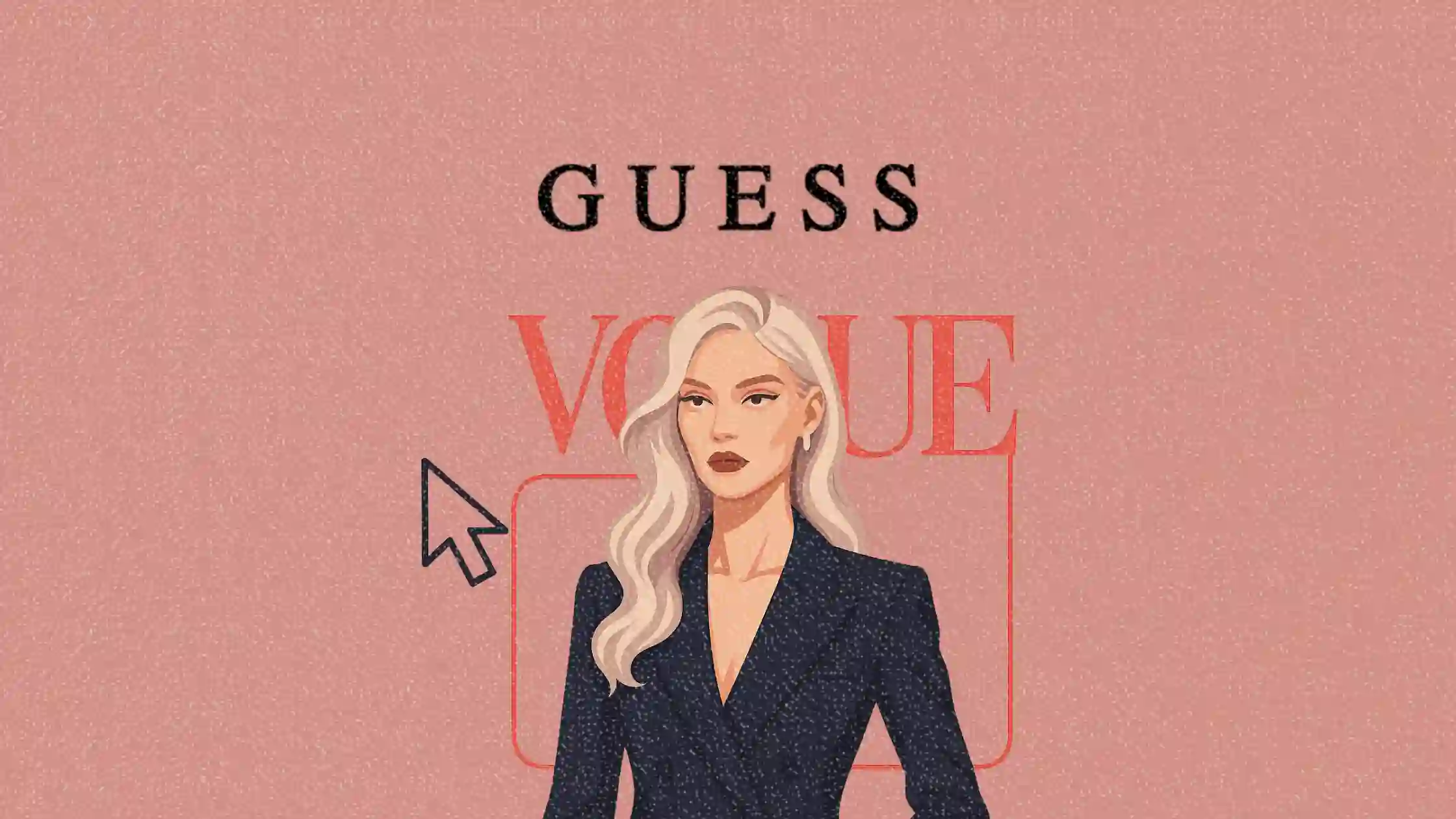Vogue and Guess spark backlash with AI model ad
Guess used an AI-generated model in Vogue and the internet isn’t having it

A high-fashion ad in Vogue is drawing intense scrutiny, not for what it shows, but for who isn’t real. Guess’s latest campaign features an AI-generated model created by studio Seraphinne Vallora. The campaign has triggered a wave of online backlash and reignited debates about beauty standards, creative labor, and the role of artificial intelligence in fashion marketing.
The August issue of Vogue includes a two-page spread featuring a blonde model in two editorial outfits. The styling is polished, the poses are sharp, and the entire setup screams luxury fashion. But a small line in the corner reads: “Produced by Seraphinne Vallora on AI.” The model does not exist.
This article breaks down what happened, how audiences responded, and what marketers should take away from the controversy.
Short on time?
Here’s a table of contents for quick access:

What happened in Vogue's Guess ad
The campaign was produced by Seraphinne Vallora, an AI design studio launched by Valentina Gonzalez and Andreea Petrescu. Their aim is to make high-fashion visuals more accessible by using AI tools in place of traditional production methods.
@lala4an ♬ original sound - freak
In the Vogue spread, the AI-generated model is shown wearing two looks: a pale blue romper with floral appliqué and a black-and-white chevron dress with a matching handbag. The visuals appear indistinguishable from traditional editorial photography. Only a tiny disclaimer identifies the model as computer-generated.
The post went viral after TikTok user @lala4an highlighted the AI disclosure in a video that racked up more than 2 million views. Public response was swift and largely negative.
How audiences responded online
Critics accused Guess and Vogue of contributing to unrealistic beauty standards and of cutting out real models from paid opportunities. “Beauty standards are already insane right now,” one commenter wrote. “It’s gonna reach levels of impossible for young women because poor girls are gonna start comparing themselves to not even humans.”
YouTuber Isabel Brown echoed those concerns in a reaction video, pointing out the flawless skin and inhuman symmetry of the model. “No actual human being has body proportions naturally like this,” she said.
Although Guess has not posted the ad on its social media channels, users have left angry comments under unrelated posts. Vogue has not issued a public response either. Seraphinne Vallora, however, did publish a defense on Instagram, asking why engineers and designers cannot build beauty too.
Co-founder Petrescu explained to BuzzFeed that the original project was meant to promote their own jewelry brand without hiring models. When the visuals went viral, Guess co-founder Paul Marciano reached out to license the work.
The studio claims their process is far from a basic AI prompt. They describe it as design-led, involving mood boards, stylists, and real photographers for pose testing. “If people can’t tell the model is digital, that’s not our fault,” said Petrescu. “We disclose it. So do the brands.”
Still, Gonzalez admitted that their idealized images consistently outperform more diverse representations on social. “It’s not even us, it’s the public,” she said. “If they loved the diversity, we would have flooded our Instagram with diversity.”
What marketers should know
This AI-powered fashion ad is a wake-up call for marketers. Here’s what to take away:
1. Disclosure doesn’t equal clarity
Even when AI use is technically disclosed, it may still feel hidden or misleading to viewers. Marketers should consider more prominent or creative ways to signal the use of generative content, especially in visual media.
2. AI models can deepen brand trust issues
Using synthetic models might save costs or generate buzz, but it also risks eroding brand credibility. In industries where identity and representation matter, like beauty and fashion, the backlash can be immediate and viral.
3. Audience tastes are shaped by what they see
Gonzalez and Petrescu argue that the public responds better to idealized beauty. That may be true, but brands have a responsibility to challenge problematic patterns, not just follow the algorithm. AI content should not be an excuse to double down on outdated aesthetics.
4. AI “twins” may be a better path forward
Seraphinne Vallora is now offering AI-generated replicas of real models, allowing talent to appear in two places at once. This approach supports working talent and could be used ethically if properly disclosed and compensated.
5. A backlash plan is essential
Neither Vogue nor Guess responded publicly, which has likely made things worse. Marketers using AI in campaigns should prepare public-facing talking points and contingency plans in case of backlash. Silence is rarely neutral.
The Vogue x Guess controversy is about more than just one ad. It is a reflection of growing tension between creative innovation and cultural responsibility. For marketers exploring generative content, the lesson is clear. AI can extend your creative capabilities, but only if paired with transparency, inclusivity, and human ethics.




